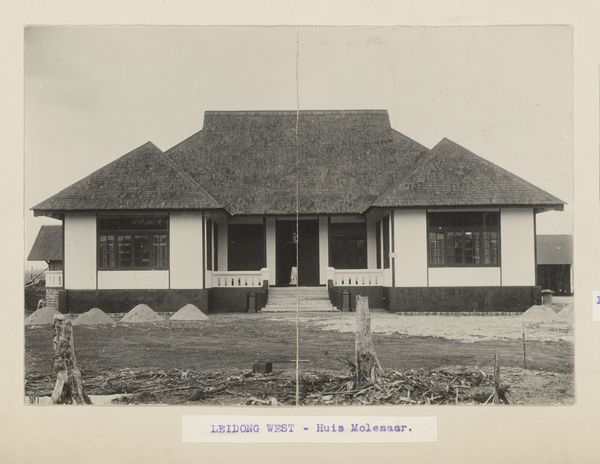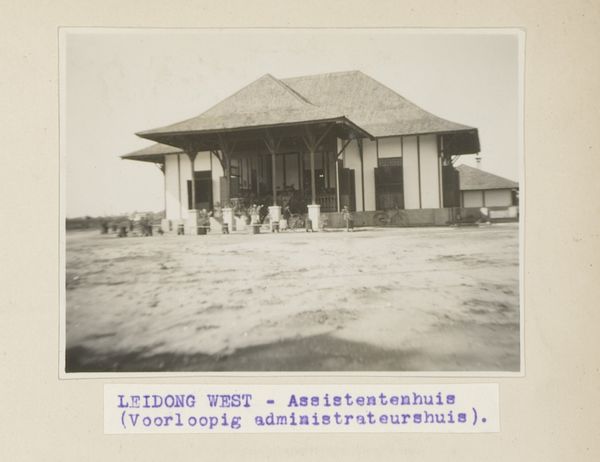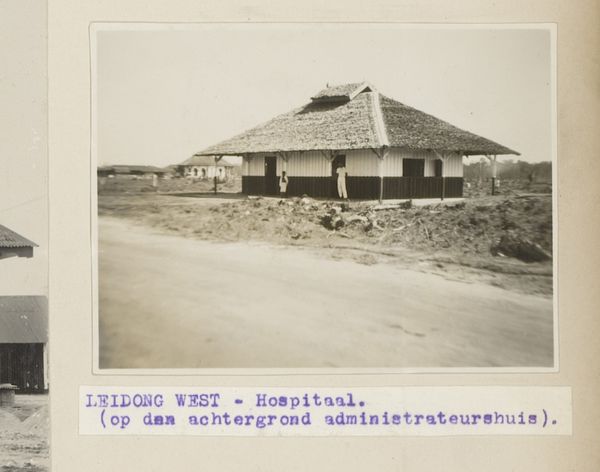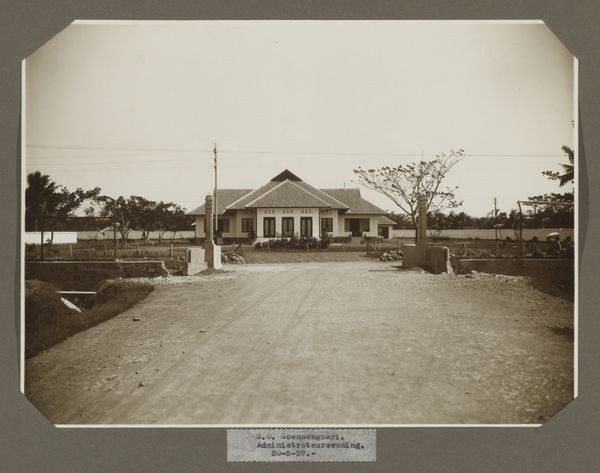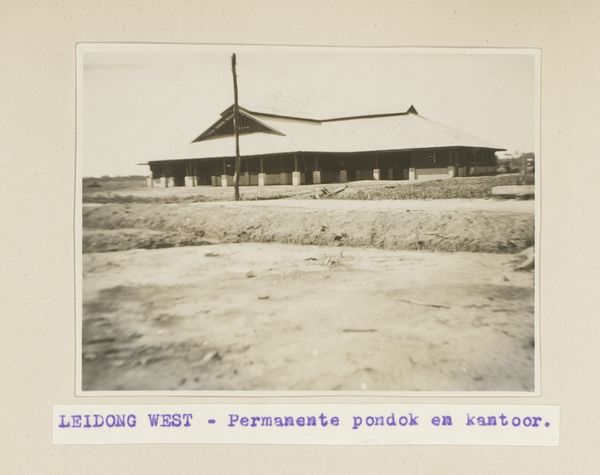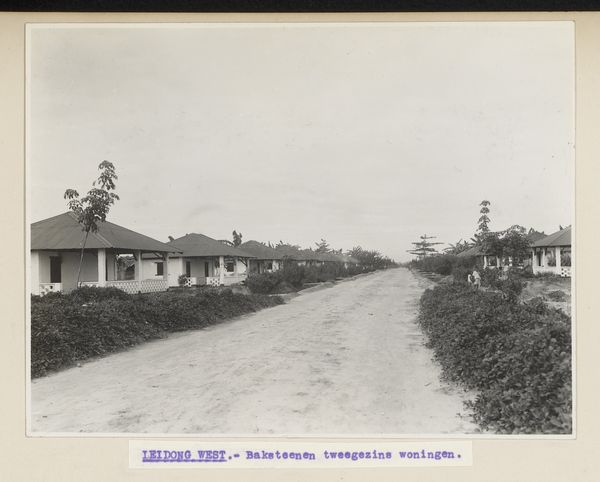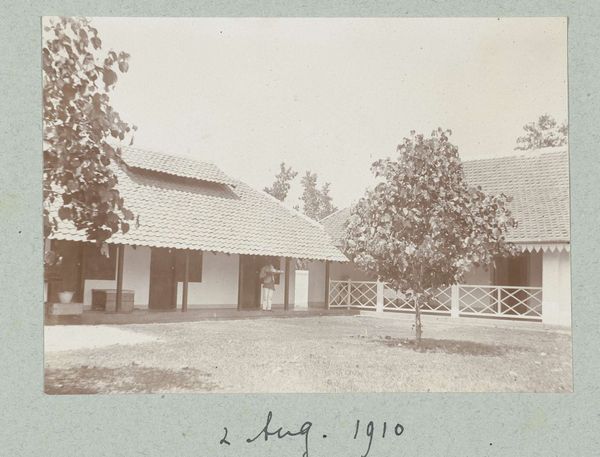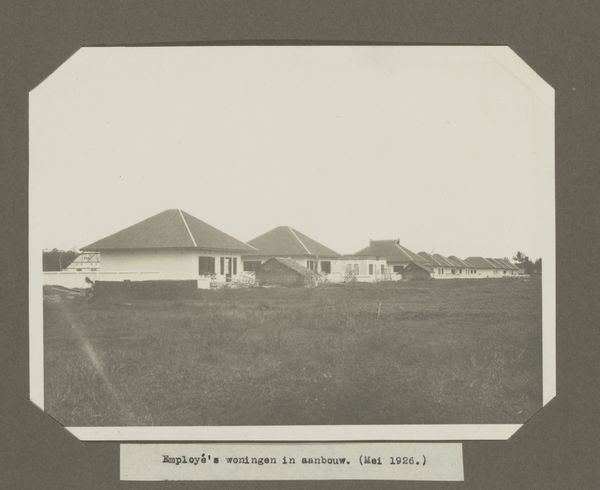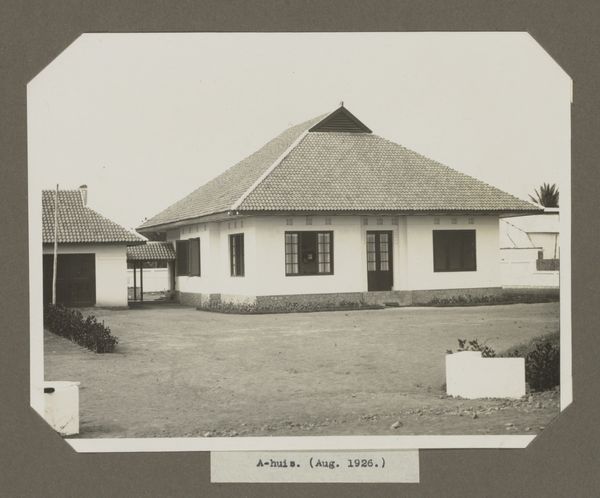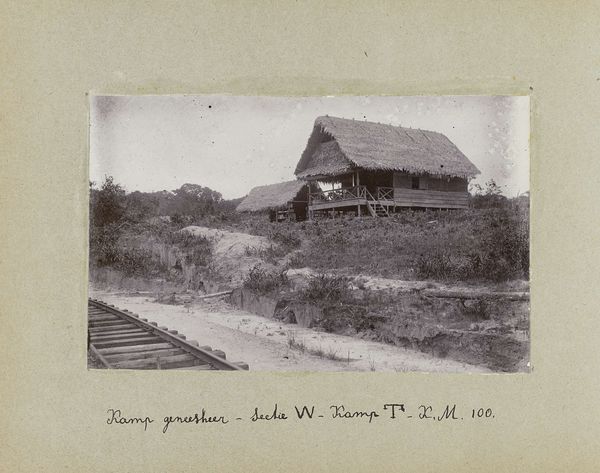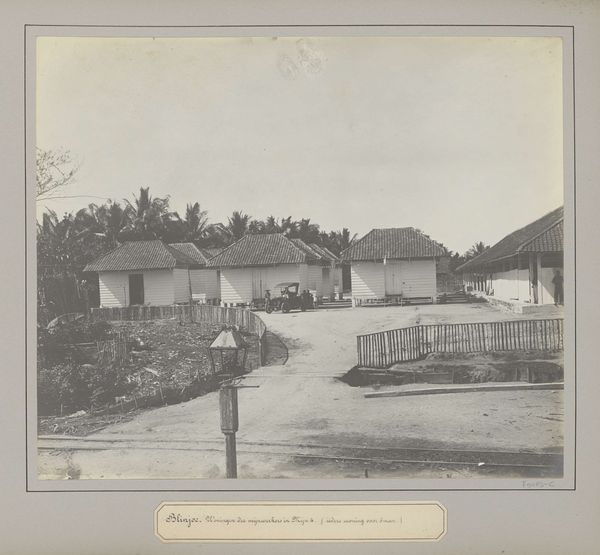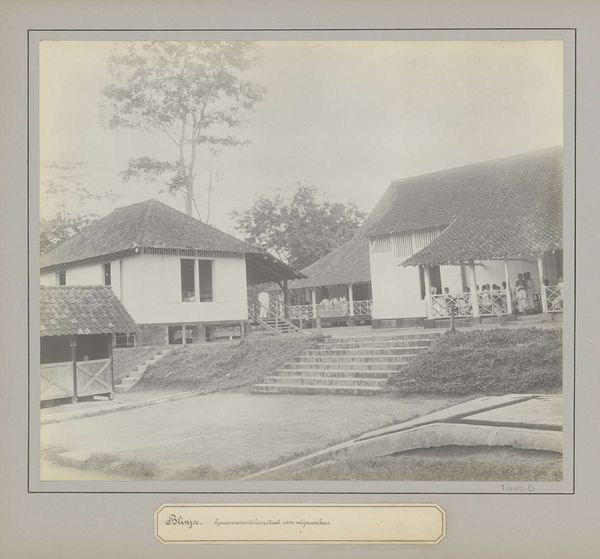
photography, architecture
#
landscape
#
archive photography
#
photography
#
architecture
#
realism
Dimensions: height 79 mm, width 105 mm
Copyright: Rijks Museum: Open Domain
Editor: This is an interesting archival photograph titled "Leidong West - Steenen kampongshuisjes," taken sometime between 1925 and 1939. It seems to depict a simple, almost austere, house in a rural setting. What’s your interpretation of this image, particularly its historical significance? Curator: It’s fascinating how this image captures the intersection of architecture and colonialism. "Steenen kampongshuisjes," meaning "stone village houses," points to a deliberate shift from traditional dwellings, possibly influenced by colonial powers introducing new building materials and designs. Consider the social engineering at play here – the visual representation of a modernized lifestyle being imposed or encouraged, possibly to replace traditional building techniques and cultural expression. Editor: So, you see the architecture itself as a kind of statement? Curator: Precisely. These houses might have been presented as an improvement, but their adoption would simultaneously dismantle existing cultural practices around building and community. This wasn’t just about providing shelter; it was about reshaping the social landscape. Notice the bare landscape – it speaks to a broader restructuring of the environment as well. Who benefits from this standardization? How does this seemingly innocuous image tell a larger story of power? Editor: It's like the photo isn't just showing a house; it's documenting a much bigger change in society. Now I am wondering how people living there at the time would perceive this type of building. Curator: Exactly. The photograph operates as an ideological tool, subtly reinforcing the colonial narrative of progress while erasing indigenous architectural traditions and societal structure. Editor: That gives me a lot to think about. It is never just a photo of a house! Curator: Indeed, every detail, every composition decision speaks to wider social and political conditions.
Comments
No comments
Be the first to comment and join the conversation on the ultimate creative platform.
